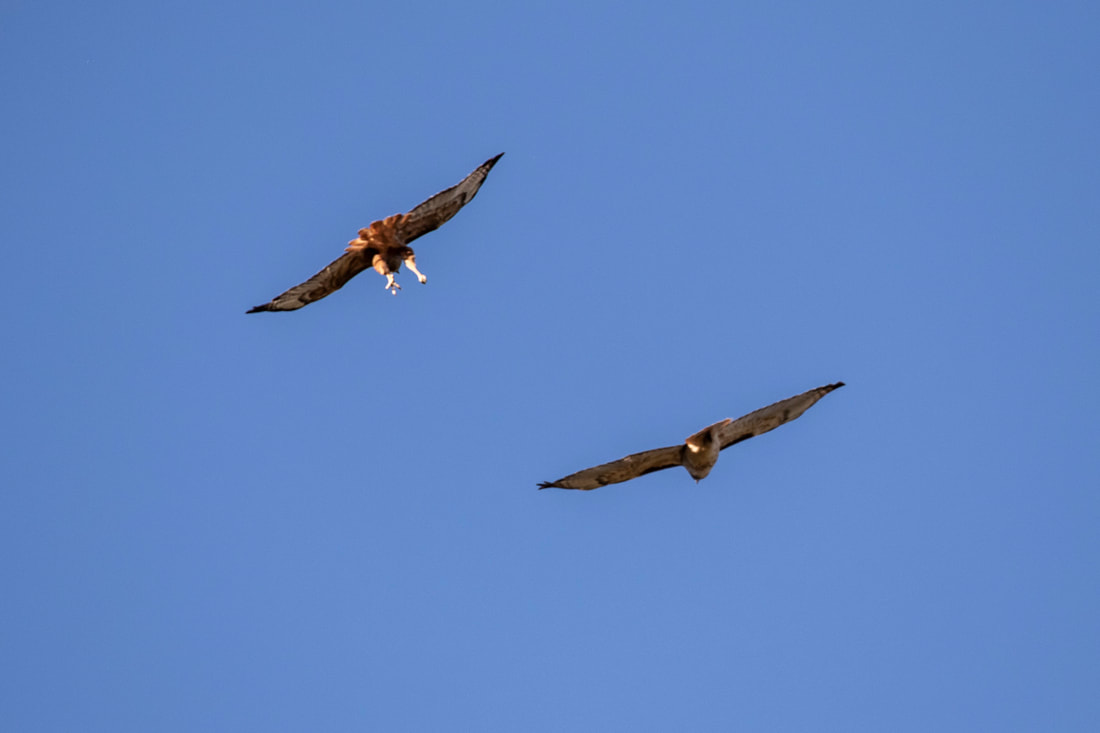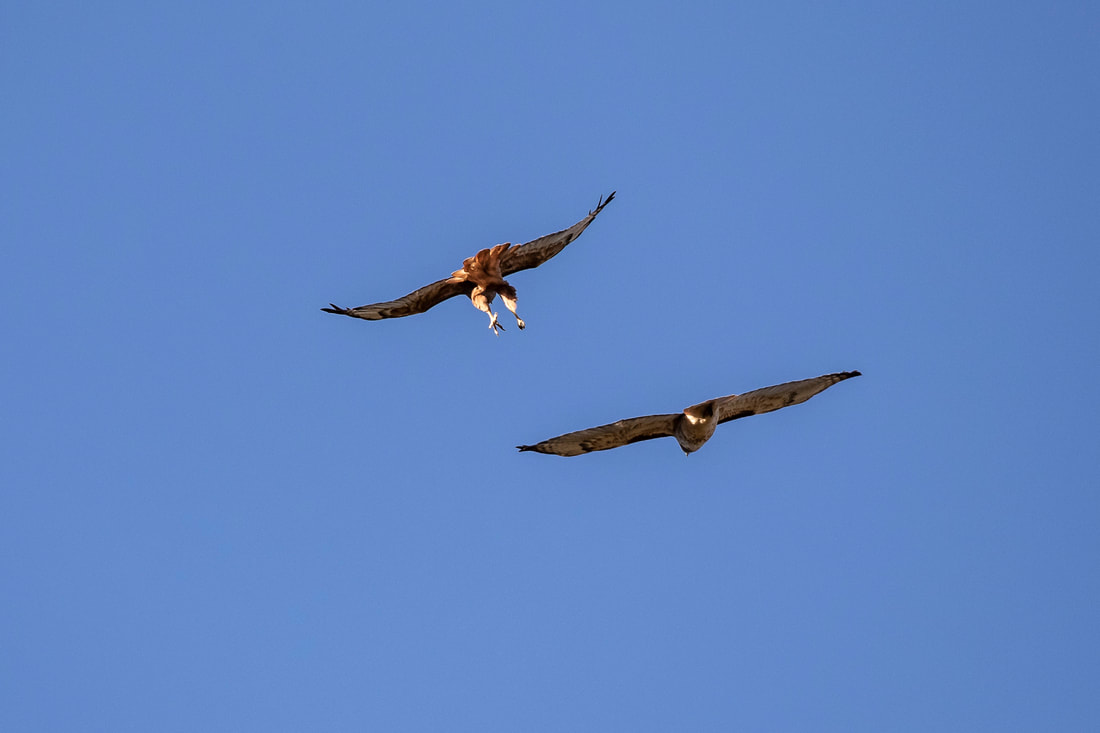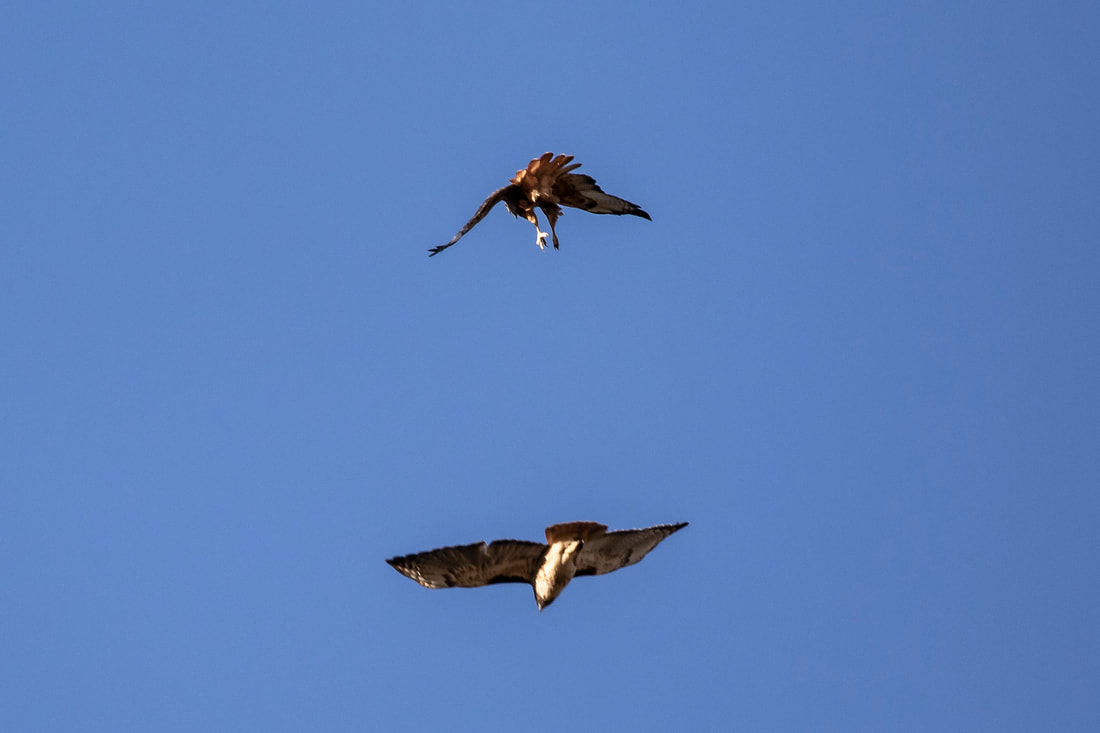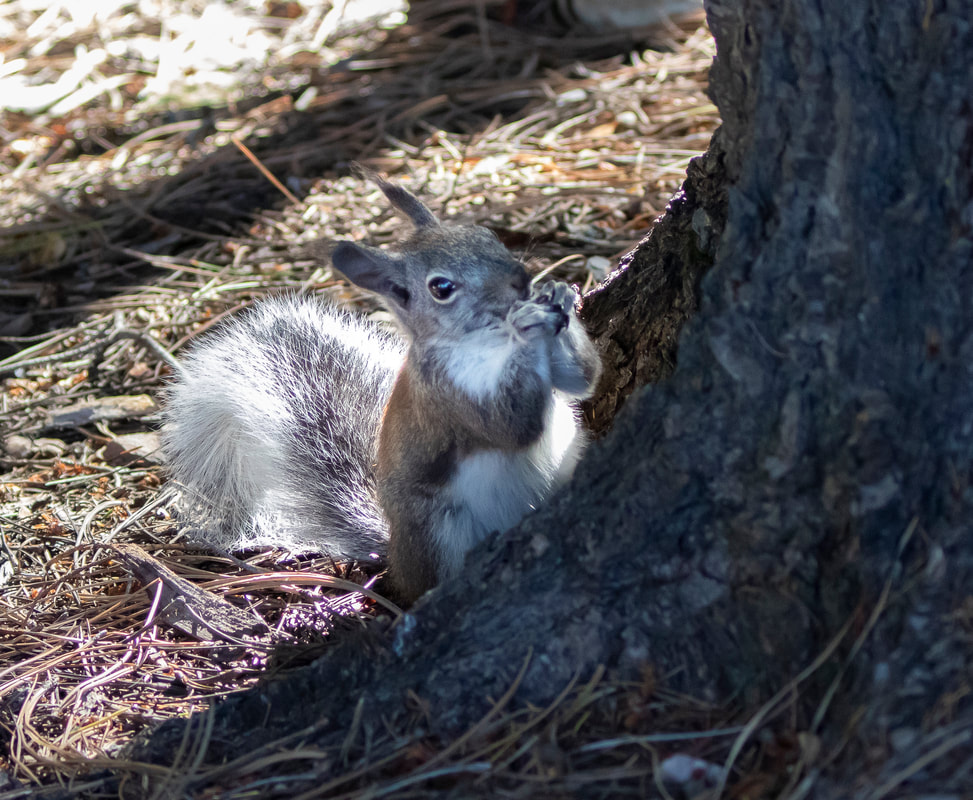|
Yes, I know it is November, but it is hard to publish photos of October in October, so here they are, just past October. That gives you ALL of October! The image above is, yes, an apple on an apple tree in Bear Wallow just west of the tunnel that runs under the highway. So, why is there a single apple tree there? My best guess is that at some time there was a cabin or a campground nearby, and someone planted the tree. It was bearing good looking fruit on October 19th. If you have knowledge of the origins of this tree, please add a comment at the end of this post! Thanks! More Bear Wallow below . . . . . Bear WallowBear Wallow is a small valley that runs east to west not far from the top of the mountain at mile post 22. For a Map see this link. The trail through the valley can be accessed either from E. Upper Bear Wallow Road which runs east of the highway where it makes a hairpin turn, or from Soldiers Camp Road which is across the highway from the Butterfly Trailhead. There is a huge culvert, a tunnel if you like, that runs under the highway providing hikers and picnicers access the the valley on either side of the highway. The valley is loaded with oaks and maples, as well as varieties of pine trees. If you are not from Tucson, this valley is a one hour drive north of Tucson at at ~7500 feet. Yes, you can go from the Sonoran Desert to pines, oaks and maples in an hour. About 30 degrees cooler also! The image above was captured at the eastern end of the trail, just south of E. Upper Bear Wallow Road, October 24th. The images that follow were all captured along the trail. Bear Wallow is a great place to walk or picnic. All these photographs were captured in the 11 am to 1 pm time frame. Even at high noon, only a little light filters onto the valley floor, keeping the floor dark while the tree tops are brightly lit. Acorn Woodpeckers preparing for winterAcorn Woodpeckers are year round residents of Mt Lemmon, living in large groups, and storing acorns in granary trees. For more on granary trees, and some great video, see this Cornell Bird Academy site. The image above is a male with the characteristic clown-like black and white face and red crest, with the striking white iris. Note how he is bracing himself with his tail, a typical woodpecker posture allowing him to get a three point stance on the tree truck and pound away on the bark. The two images below are of a female, distinguished by a black band across the forehead, between the white face and the red crown. A subtle difference, but easy to spot if you look for it. Look closely at the image below of a male and you will see the nictitating membrane partially closing over the eye. This extra membrane, in addition to the eyelid, is present in birds, as well as reptiles, sharks and a few mammals. It moves horizontally and can cover the entire eye. This membrane cleans the surface of the cornea, keeps it moist, and protects it. Some of the aquatic birds, such as diving cormorants have nictitating membranes with a central, window-like area that acts like a contact lens over the cornea allowing the bird to see through the membrane when it is deployed. A bit like wearing goggles when you swim. Acorn Woodpeckers live in large colonies and store acorns in designated granary trees. Below we see a male moving an acorn to a hole in a dead tree packed with acorns. This tree is close to the corner of Ajo and N. Loma Linda Extension Road. There is almost always some activity at this tree and adjacent trees. The woodpeckers work in pairs or groups, and keep track of their inventory. The holes are drilled in the winter, but filled in the summer. As the acorns age, they will shrink slightly. The woodpeckers check the acorns for fit, "rotating stock," moving an acorn from one hole to the next to assure a tight fit, making their food difficult for other critters to pull out. Reference: Cornell Lab of Ornithology. The Acorn Woodpecker will use the stored acorns as food during the winter, only leaving the mountain if the food runs out. Fortunately, if supplies run out, warmer temperatures and more food is just a quick glide down the mountain. The Acorn Woodpecker is not the only year round resident of the mountain. The White-breasted and Pygmy Nuthatches, both year round residents, store food in trees, and can be seen in their typical foraging behavior running up and down tree trunks looking for, or storing, food. No migration for these species is recorded, but, if they run out of food, they can cruise down to the valley. Other local birds that are considered year round residents, such as Steller's Jays, and Yellow-eyed Juncos will migrate downhill in the winter to find food. [Reference: Birds of North America, Online, Cornell Lab of Ornithology] Cous White-tailed DeerThe Coues White-tailed Deer is a sub-species of the eastern White-tailed deer, and resident in SE Arizona, SW New Mexico, and Mexico. Named after the American Army physician Dr. Elliot Coues who described it in 1865, it is pronounced "cows" although the more common pronunciation is "cooz." It is both a desirable and challenging prey for deer hunters, as evidenced by the number of websites devoted to the species. Coues White-tail prefer woodlands of chaparral, oak and pine with interspersed clearings, making the Catalina range an ideal habitat. The female above is avoiding the fall hunting season by hanging out near Ajo Road. Image captured at sunset on October 12th. In the images below we see a buck munching greenery under a deck off of Middle Sabino Road. He is trying to avoid "camera season" (in addition to hunting season) just in case. Image captured October 20th. Deer have antlers, a form of bone, which are grown and shed annually. Growth for the Coues White-tailed occurs from June to September, during which time the growing antlers are covered with a skin known as velvet. When the growing stops, the velvet drys out, and the buck rubs off the velvet to create a polished look. The buck above appears to be out of the velvet stage. The antlers are retained through the breeding season, until a fall in testosterone causes decalcification of the pedicle at the base of the antler, and the antlers fall off. In Arizona this generally occurs in April or May. As a buck ages and completes body growth, annual antler growth increases, producing larger racks for the older bucks. [Reference: coueswhitetail.com]. A Butterfly Break: American LadyThese photographs were taken on the Meadow Trail, at the top of Mt. Lemmon on October 6th. I am almost totally ignorant about butterflies, and I thank Jeff Babson for the identification. These images are a bit soft, perhaps due to rising thermals in the meadow. Red-naped SapsuckerWalking along Middle Sabino Road on the afternoon of October 20th, we spotted this Red-naped Sapsucker foraging for food. He did not stay at this tree for very long, but long enough for me to get these shots. The Red-naped, Red-Breasted and Yellow-bellied Sapsuckers were once treated as a single species - the Yellow-Bellied Sapsucker. However in 1983 they were split into three separate species when studies showed distinctions among the three sufficient to divide them. The Red-naped. seen here, lives in the western U.S., breeding in the Rocky Mountains into Canada and wintering in southern California, Arizona and New Mexico and well south into Mexico. The bird spotted above is a migrant, looking for food on his trip south. The Red-breasted lives further west along the Pacific Coast, breeding in Canada and wintering south. The Yellow-bellied lives east, from Oklahoma and Texas to the eastern seaboard, breeding in Canada. [Reference: Birds of North America Online] The images shown below were captured at Agua Caliente in November of 2018. As with the Acorn Woodpecker, we can see the typical three point stance, two feet and the tail, that allows the woodpecker to hold onto the side of a tree and hammer away at the bark with his bill. Red-tailed Hawk, Rufous MorphThe afternoon of October 12th we spotted two Red-tailed Hawks soaring above Upper Loma Linda Extension where it meets N. Ajo Avenue. This hawk is a rufous morph (again, thanks to Jeff Babson for the help in identification), with reddish brown on the chest. Red-tailed Hawks are widespread throughout North America from Mexico and Central America up to northern Canada. The plumage color and pattern is highly variable, and birds are generally classified as either dark or light morph, with the addition of the rufous morph, seen here. Their name comes from the generally universal reddish dorsal tail. The sequence of images that follow show an interaction between the hawk pictured above and a second Red-tail that entered the same airspace. It appears that our "home hawk" descends upon the interloper with talons open, discouraging him (or her) from sharing the space. Red-tail's are territorial. Below, a Red-tail, rufous morph, perched on a snag above N. Ajo Avenue in Summerhaven. I suspect this is the same bird that I captured in flight, surveying his (or her) territory. Abert's SquirrelLet's close with the Abert's squirrel, a small tree squirrel that lives from the Rocky Mountains south into Mexico with populations found in Arizona, New Mexico, and SW Colorado. They like cool and dry ponderosa pine forests, where they feed on the seeds and pinecones. They are named after Colonel John James Abert, an Army officer who headed the Corps of Topographical Engineers and organized the effort to map the American west in the 19th century. The Abert's squirrel has tufted ears with pale underparts and a rufous patch on the lower back. They nest in the ponderosa pine canopy in spherical nests. They are excellent climbers and can hold onto a tree with their hind feet, freeing up their fore feet for eating. Images above and below, an Abert's close to N. Tucson Avenue, October 6th. Look for them in the winter, they live on the mountain year round. Many thanks to Jeff Babson for always being willing to review the "mystery birds" I find in my travels, and making the identification, always with good cheer and additional information. Thanks Jeff! That's it for October on the mountain! More soon. Happy Trails!
2 Comments
Pam Haskrll
11/11/2019 05:38:19 am
Henry- we love the photographs- and also the education!
Reply
Linda Currin
11/11/2019 08:20:04 pm
Now that I've closed up my wonderful cabin for the winter, I am grateful for your special pictures and comments which will carry me through until next spring! Thank you, as always, for your talents and insights into what surrounds my senses of joy!!
Reply
Leave a Reply. |
AuthorHenry Johnson, photographer and author of this site. For more detail, see About
Categories
All
Archives
July 2024
|










































 RSS Feed
RSS Feed